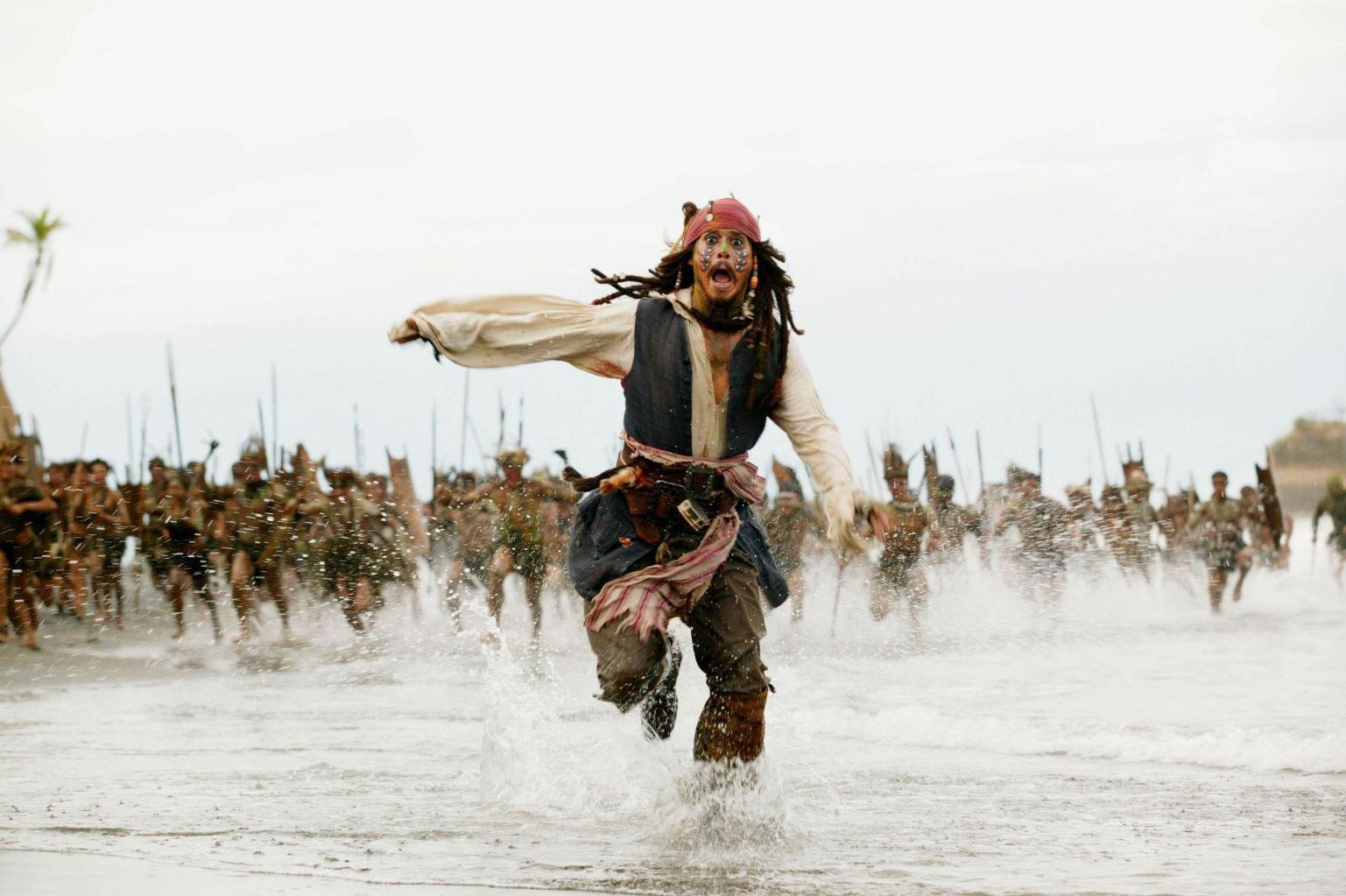In anticipation of the latest Pirates of the Caribbean installment, Dead Men Tell No Tales, we are taking a look back at the franchise and the legacy that these billion dollar blockbusters have left upon The Walt Disney Company and pop culture. Today, we’re taking a look at the film’s second installment, Dead Man’s Chest which was released in theaters in 2006.
After Pirates of the Caribbean: The Curse of the Black Pearl became a breakout hit in 2003, a sequel was almost immediately inevitable and Disney was quick to get the follow-up, Dead Man’s Chest to theaters as early as possible. While it isn’t as well-grounded as The Curse of the Black Pearl is, Dead Man’s Chest manages to blend the fun and ingenuity of Black Pearl while expanding on the Pirates mythology to create a generally-positive swashbuckling good time. Unlike The Curse of the Black Pearl, which stands as its own respected film, Dead Man’s Chest acts more as a two-part story, setting the stage for events which will come to a close with follow-up a year later, At World’s End. In that regard, it instantly becomes slightly more muddled than its predecessor, due to the fact that it’s merely just the first act (although a much-better one) to a follow up film, while Pearl is a more focused, nuanced tale that had a beginning, an end, and more of a purpose.
That doesn’t make this sequel unworthy, because much of it is truly a wonderful amount of fun and should offer a fun expansion to those who grew fond of Jack Sparrow in 2003. The story expands upon the mythology that was introduced in The Curse of the Black Pearl in clever and original ways, especially in regards to the exploration of Bootstrap Bill, the father of protaganist William Turner. The movie uses this mythology set as the backdrop of Pearl to be the central emotional focus of Dead Man’s Chest and for the most part, it works pretty well. This character arc between between Will and his father is something that will culminate in the next film, At World’s End, and this film does a good job at setting the stage for what’s to come.
Another thing that really works is that throughout this film, each character is filled with their own set of motivation, giving them purpose to fill the story. This pays off in the film’s climactic action sequences on an island in search of Davy Jones’s beating heart, and a three way battle between former Commodore James Norrington, William Turner and Captain Jack Sparrow. Each of these men have their own motivations to betray one another and reap the benefits of harnessing Jones’s heart and this adds a depth of intensity that pays off for the finale, ending in a major unexpected turn of events which is perfect if only for its shock value alone.
 What doesn’t work about the movie is that unlike Pearl, this movie doesn’t really stand as a great movie on its own, and is bogged down by the fact that it’s only setting the stage for At World’s End, a far-less exciting installment into the trilogy. Pearl doesn’t rely on overuse of CGI, and also tells a fully crafted story while Dead Man’s Chest is more determined to race to the cliff-hanger so that they can ensure the seats will be filled when At World’s End hits theaters a year later. Despite this, Dead Man’s Chest is a fun, action packed and unpredictable adventure and a follow up that leaves open so much promise for a brilliant climactic finale. Sadly, that’s not what we got, but that’s a story for our next installment.
What doesn’t work about the movie is that unlike Pearl, this movie doesn’t really stand as a great movie on its own, and is bogged down by the fact that it’s only setting the stage for At World’s End, a far-less exciting installment into the trilogy. Pearl doesn’t rely on overuse of CGI, and also tells a fully crafted story while Dead Man’s Chest is more determined to race to the cliff-hanger so that they can ensure the seats will be filled when At World’s End hits theaters a year later. Despite this, Dead Man’s Chest is a fun, action packed and unpredictable adventure and a follow up that leaves open so much promise for a brilliant climactic finale. Sadly, that’s not what we got, but that’s a story for our next installment.
Check back here soon as we take a look back at Pirates of the Caribbean: At World’s End in our next installment!

